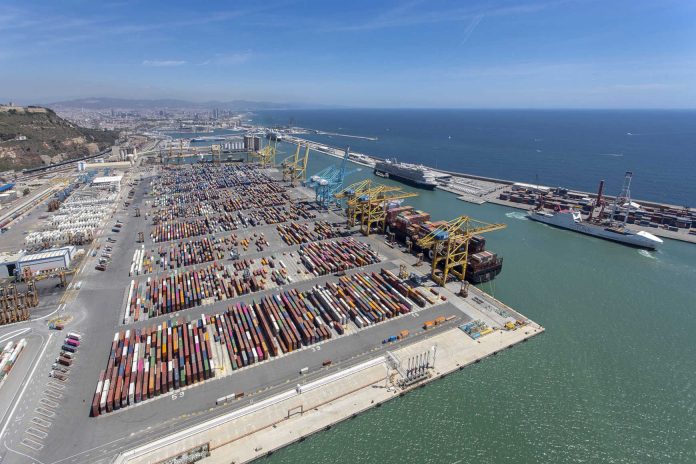APM Terminals Barcelona has announced the application of 5G technology to improve security in ports in a 5G pilot project in partnership with the 5G Barcelona initiative, Telefonica and Mobile World Capital Barcelona.
[s2If is_user_logged_in()]The system is based on the application of connected car technology and industrial traffic safety, according to an announcement, while the information will be shared continuously and offer the position and trajectory of machinery, vehicles, and people in real time, enabling traffic co-ordination and warning drivers in the event of an accident risk.
The enhancement in port security is expected from the use of 5G networks to connect cranes, vehicles, and people by merging different advanced communication and localisation technologies. The main objective of the project is to minimise the potential risk of collisions between mobile machinery and fixed elements, vehicles, and people in the container terminal.
“The pilot test, which is based on the technology of the C-V2X connected car and the low latency of 5G communications and Edge Computing, aims to turn APMT Barcelona into a safer space for workers, thanks to a system that allows the co-ordination of port traffic and the implementation of advanced algorithms for accident traffic prevention,” said APM Terminals in its announcement.
Through an alarm system, both crane drivers and trucks or pedestrian personnel will be warned about a potential collision against fixed and mobile elements and the system will in addition send an instant notification to a control centre in case of collision.
The development of the project involves the deployment of Telefónica’s 5G coverage at APM Terminals in the Port of Barcelona, the provision of 5G connectivity to straddle carriers, trucks and terminal personnel, as well as an acoustic warning system for possible collisions.
APM Terminals noted that the straddle carriers will be equipped with an on-board unit capable of communicating via 5G and through C-V2X technology between them and with the rest of the actors. Additionally, trucks, truckers and terminal personnel will have a 5G smartphone, on which a C-V2X application will be installed. As such, the smartphone becomes another piece of the V2X environment, as well as the lever for an easy transition towards a fleet of connected vehicles and direct inclusion of people in the ecosystem, explains APMT.
At the same time, fixed elements, such as streetlights, will also be signalled with C-V2X communications, communicating with the rest of the mobile actors in real time.
APM Terminals went on to explain that “All the information communicated by the cranes, trucks and pedestrian personnel is sent securely to an application located geographically very close (Edge) to their place of consumption in order to offer immediate responses.”
This application, hosted on the Edge, has the intelligence to be able to co-ordinate this co-operative driving between the different actors – called co-operative intelligent transport system (C-ITS) – and also offers a dashboard to APM Terminals to visualise on a map the positions of each of the actors participating in the project. Obtaining a precise location is vital for APM Terminals and for this reason a system has been developed to allow obtaining precise locations to the nearest few centimetres.
The project, which is expected to be completed by next summer, is comprised of different phases of development and will use the facilities of APM Terminals Barcelona as a test location. Depending on the results obtained, the system could be replicated and implemented at other ports and terminals to contribute to the prevention of occupational accidents.[/s2If]
[s2If !is_user_logged_in()]Please login or register to read the rest of the story[/s2If]







